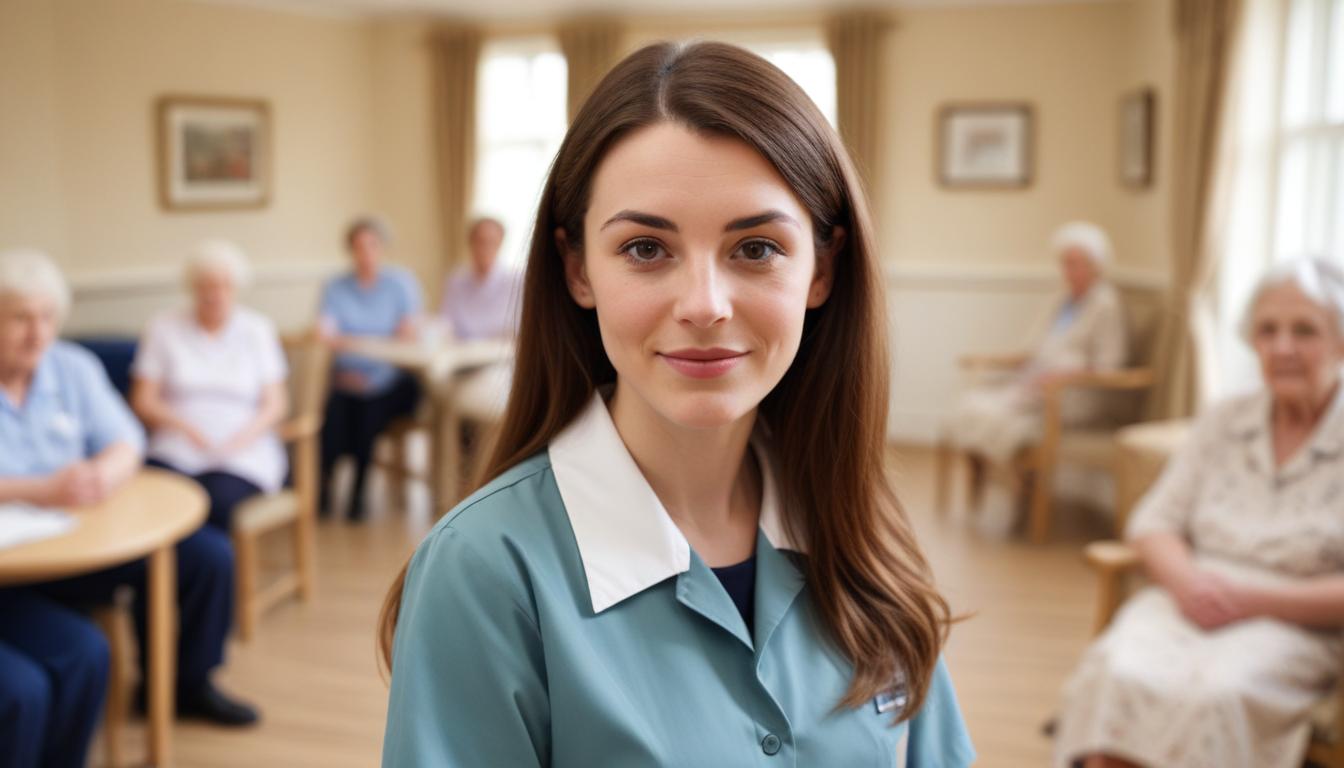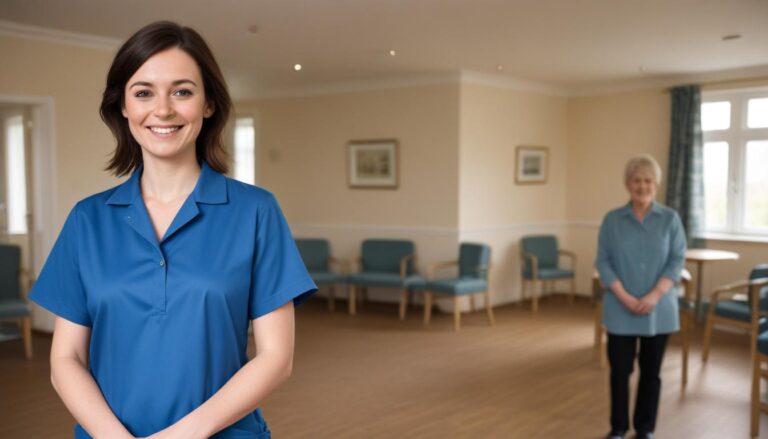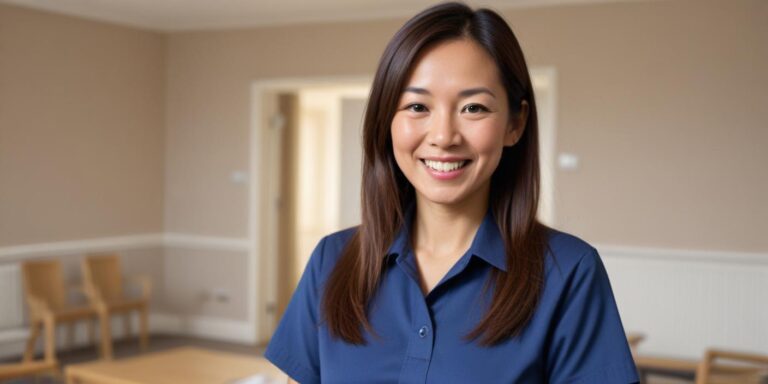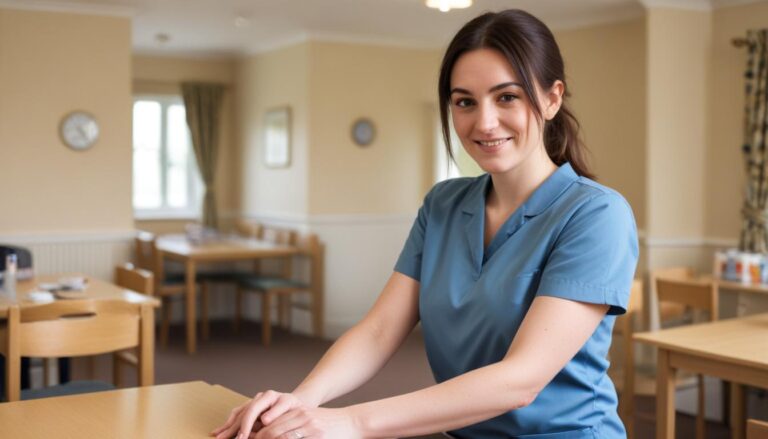Care homes are essential in providing comprehensive care and support to individuals who require more intensive assistance, both medically and personally.
To ensure residents’ safety, comfort, and well-being, a broad range of specialised equipment is utilised.
This guide will look into the detailed types of equipment used in nursing care homes.
Mobility Aids
Wheelchairs and Walking Aids
Wheelchairs and walking aids are fundamental in supporting residents’ mobility and independence. Common types include:
- Manual Wheelchairs: Require either the user or a caregiver to push.
- Electric Wheelchairs: Battery-powered, enabling users to move independently.
- Walking Frames: Provide support and stability for residents who can walk but require additional steadiness.
- Rollators: Walking frames with wheels and often a seat for resting.
- Crutches: Assist residents who can partially bear weight on their legs but need additional support.
- Walking Sticks: Offer lightweight support for those with minor mobility issues.
Hoists and Lifting Equipment
Hoists are really important for transferring residents who cannot move independently, preventing caregiver strain and ensuring resident safety. Types include:
- Ceiling Hoists: Attached to the ceiling and move along tracks to facilitate various transfers.
- Mobile Hoists: Portable units that can be used throughout the nursing home.
- Standing Hoists: Assist residents who can stand but need support to move from one place to another.
- Slings: Various types of slings (e.g., full body, hygiene, sit-to-stand) used with hoists to accommodate residents’ specific needs.
Beds and Mattresses
Specialised Beds
Specialised beds cater to the diverse needs of nursing home residents, ensuring comfort and effective medical care. They include:
- Profiling Beds: Adjustable to various positions for enhanced comfort and medical treatment.
- Low Beds: Designed close to the ground to minimise injury risk from falls.
- Bariatric Beds: Sturdier and wider beds for overweight residents, ensuring robust construction.
- Rotating Beds: Aid in turning residents who have limited mobility.
Pressure Relief Mattresses
Pressure relief mattresses are essential for preventing bedsores by distributing weight evenly. Types include:
- Memory Foam Mattresses: Conform to body shape, providing support and comfort.
- Air-Flow Mattresses: Utilise air cells that inflate and deflate to reduce pressure on the skin.
- Gel Mattresses: Combine gel and foam layers to provide excellent pressure redistribution.
Hygiene and Personal Care Equipment
Bathing Equipment
Bathing equipment ensures that residents can bathe safely and comfortably. This includes:
- Walk-in Baths: Feature a door allowing residents to enter without climbing over a high edge.
- Bathing Hoists: Lift residents into and out of the bath, promoting safety.
- Shower Chairs: Provide seated support for residents during showering.
- Shower Trolleys: Allow bed-bound residents to be showered safely.
Toileting Aids
Toileting aids help residents maintain their dignity and independence. These include:
- Commode Chairs: Portable toilets that can be used in the resident’s room.
- Raised Toilet Seats: Facilitate easier sitting and standing from the toilet.
- Toilet Frames: Offer additional support around the toilet.
- Bidets and Washlets: Installed on toilets to assist with personal hygiene.
Monitoring and Emergency Equipment
Call Systems
Call systems are essential for residents to alert caregivers when they need assistance. They include:
- Call Buttons: Simple buttons that, when pressed, alert the staff.
- Cord Pulls: Usually found in bathrooms and can be pulled to summon help.
- Wireless Call Systems: Portable devices that residents can carry.
Fall Detectors
Fall detectors ensure quick response from staff if a resident falls. These include:
- Motion Sensors: Detect unexpected movements and alert staff.
- Wearable Devices: Worn by residents and trigger an alarm if a fall occurs.
- Bed and Chair Sensors: Monitor the movement of residents from their beds or chairs.
Dining and Feeding Equipment
Adaptive Utensils
Adaptive utensils and equipment support residents in eating independently and comfortably. These include:
- Ergonomic Cutlery: Easy to grip and use, suitable for residents with limited dexterity.
- Plate Guards: Prevent food from being pushed off the plate.
- Non-Slip Mats: Keep plates and bowls steady during meals.
- Weighted Utensils: Provide extra stability for residents with tremors.
Drinking Aids
Drinking aids ensure residents can hydrate safely. These include:
- Spill-Proof Cups: Prevent spills and are easier for residents to use.
- Straws with Valves: Make it easier for residents with limited sucking ability to drink.
- Two-Handled Mugs: Offer better control for individuals with weak grip.
Environmental Control
Heating and Cooling
Maintaining a comfortable temperature is essential in nursing homes. Heating and cooling equipment includes:
- Radiators: Provide consistent heating to maintain a warm environment.
- Air Conditioners: Cool down areas during hot weather.
- Fans: Circulate air to maintain a comfortable atmosphere.
- Heated Blankets: Offer additional warmth for residents.
Lighting
Proper lighting is important for ensuring residents’ safety and comfort. Equipment includes:
- Ceiling Lights: Offer overall illumination for common areas and rooms.
- Bedside Lamps: Provide focused lighting for reading or personal tasks.
- Night Lights: Offer gentle illumination during the night to prevent falls.
- Motion Sensor Lights: Automatically turn on when a resident moves, adding another layer of safety.
Therapy and Rehabilitation Equipment
Physiotherapy Equipment
Physiotherapy equipment helps residents maintain physical health and recover from injuries. This includes:
- Exercise Bikes: Provide low-impact cardiovascular workouts.
- Resistance Bands: Aid in strength training and rehabilitation exercises.
- Parallel Bars: Assist with balance and mobility exercises.
- Treadmills: For controlled walking and mobility exercises.
- Exercise Balls: Used for balance and strength training.
Sensory Equipment
Sensory equipment supports cognitive and emotional well-being. This includes:
- Sensory Rooms: Designed environments with lights, sounds, and textures to stimulate residents’ senses.
- Therapeutic Music Systems: Provide calming and stimulating musical experiences.
- Aromatherapy Devices: Disperse therapeutic scents to promote relaxation.
Medical Equipment
Medical Monitoring Devices
Nursing homes use various medical devices to monitor the health status of residents. These include:
- Blood Pressure Monitors: Track residents’ blood pressure levels regularly.
- Glucometers: Measure blood sugar levels, essential for diabetic residents.
- Oxygen Concentrators: Provide supplemental oxygen for those with respiratory issues.
- Pulse Oximeters: Monitor oxygen saturation in the blood.
Medication Management
Medication management equipment ensures the correct and timely administration of medications.
- Medication Trolleys: Mobile units for storing and distributing medications securely.
- Pill Dispensers: Organise medication dosages by time and day to prevent errors.
- Nebulisers: Aerosolize medication for residents with respiratory conditions.
Final Thoughts
Care homes use a diverse range of equipment to ensure the safety, comfort, and well-being of residents. From mobility aids to specialised beds, personal care equipment, and therapy tools, everything has a specific purpose. This equipment plays an important role in enhancing the quality of life for residents and supporting caregivers in their daily tasks.
Understanding this equipment can give peace of mind to residents and their families, knowing that all necessary measures are in place for excellent care and support.
Subscribe to Newsletter
Get the latest news and updates from Care Learning and be first to know about our free courses when they launch.







